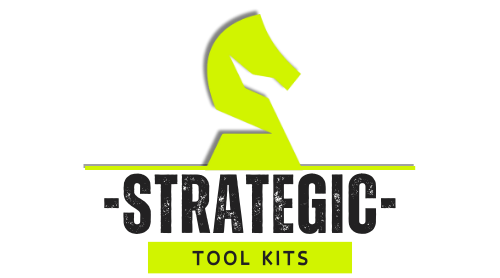Employee benefit programs represent one of the most vital components of modern employment structures.
They define how organizations care for their workforce while ensuring compliance with complex legal frameworks.
A well-designed benefits system supports both corporate responsibility and employee satisfaction.
In a highly regulated business environment, benefit programs serve a dual function: maintaining compliance with federal and regional laws while supporting strategic talent management.
Foundations of Employee Benefit Programs
Employee benefits encompass all non-wage compensations provided to workers, ranging from mandatory legal requirements to optional perks designed to enhance satisfaction.
Mandatory benefits typically include healthcare coverage, workers’ compensation, and retirement contributions.
Voluntary benefits may extend to flexible schedules, paid time off, mental health programs, or wellness incentives.
Strong benefit structures help attract and retain top talent, which directly influences organizational success.
When employees feel supported through accessible healthcare, fair compensation, and well-being initiatives, engagement and productivity increase.
Modern benefits now emphasize flexibility, inclusivity, and adaptability to cater to diverse workforce needs.

- Health and dental insurance
- Retirement savings plans (401(k), pensions)
- Paid vacation and holidays
- Remote or hybrid work options
- Wellness and professional development programs
Employers who prioritize well-structured benefits demonstrate a commitment to their teams’ well-being while meeting legal and ethical obligations.
Key Federal Laws Impacting Employee Benefit Programs (U.S.-Centric)
Employee benefit programs in the United States operate within a complex web of federal regulations designed to safeguard employees’ rights and ensure fairness in workplace benefits.
Employers must balance compliance with these laws while maintaining efficient business operations and competitive compensation packages.
1. Employee Retirement Income Security Act (ERISA)
Introduced in 1974, ERISA serves as the foundation of U.S. benefit regulation, focusing primarily on retirement and health plans provided by employers.
Its purpose is to protect employees’ interests by setting minimum standards for plan operation, funding, and fiduciary responsibilities.
Employers are required to provide clear communication about benefit structures and safeguard employee assets against mismanagement.
- Fiduciary duty: Administrators must manage benefit plans solely for the benefit of participants and beneficiaries.
- Transparency: Employers must disclose plan information, funding methods, and financial reports to employees.
- Accountability: Plan sponsors are held responsible for adhering to fiduciary standards and may face legal consequences for violations.
- Employee rights: Participants can sue for benefits or breaches of fiduciary duty if they suspect mismanagement or denial of rightful claims.
2. Affordable Care Act (ACA)
The ACA, enacted in 2010, revolutionized healthcare access in the United States by expanding coverage and enforcing employer accountability.
It set coverage mandates for organizations with 50 or more full-time employees, requiring them to provide affordable health insurance that meets specific standards.
The act also implemented mechanisms to prevent discriminatory practices in benefit structures.
- Coverage requirements: Large employers must offer insurance that covers essential health benefits such as preventive care, maternity, and mental health services.
- Affordability rules: Premiums must not exceed a certain percentage of an employee’s household income.
- Reporting obligations: Employers must submit detailed IRS filings demonstrating compliance with coverage mandates.
- Penalty enforcement: Noncompliance can result in substantial financial penalties and reputational harm.
For employers seeking tailored advice on private health insurance offerings that align with ACA standards, partnering with specialists such as Audelio expert in private health insurance for employees, can streamline plan design and compliance.
3. Family and Medical Leave Act (FMLA)
@lawyerpaige Explaining FMLA at work **informational only & not legal advice! #law #legal #lawyer #legaltiktok #lawyersoftiktok #fmla #work ♬ original sound – Paige Sparks
FMLA provides crucial job protection for employees who need time away for family or medical reasons.
It ensures that eligible workers can take up to 12 weeks of unpaid leave annually without losing their position or group health coverage.
This act represents a vital balance between organizational needs and employee well-being, granting flexibility for personal or family challenges.
- Eligibility: Employees must have worked for at least 12 months and logged 1,250 hours before qualifying for leave.
- Protected leave reasons: Birth or adoption of a child, serious health conditions, or care for immediate family members.
- Health insurance continuation: Employers must maintain group health benefits during leave.
- Job reinstatement rights: Workers must return to the same or an equivalent role upon completion of leave.
4. Consolidated Omnibus Budget Reconciliation Act (COBRA)
COBRA ensures that employees and their dependents retain access to healthcare coverage following job loss or qualifying life events such as divorce or reduction in work hours.
While the cost of coverage typically shifts to the individual, this law prevents abrupt termination of essential medical insurance during transitional periods.
- Eligibility criteria: Applies to employers with 20 or more employees offering group health plans.
- Qualifying events: Job termination, reduction in hours, divorce, or death of a covered employee.
- Coverage duration: Typically extends up to 18 months, with some cases reaching 36 months.
- Notification requirements: Employers must inform employees of their COBRA rights promptly after a qualifying event.
5. HIPAA and ADA
Two additional statutes, the Health Insurance Portability and Accountability Act (HIPAA) and the Americans with Disabilities Act (ADA), reinforce fairness and privacy within employee benefits.
HIPAA establishes strict standards for protecting employees’ medical information, while the ADA prohibits discrimination based on disability and ensures equal access to all benefits.
Their combined influence promotes integrity and inclusivity within organizations.
- Data protection: HIPAA mandates secure handling of medical data and limits unauthorized access.
- Non-discrimination: ADA requires equitable benefits for all employees, including those with disabilities.
- Wellness programs: Employers must design initiatives that encourage participation without penalizing individuals for health conditions.
- Reasonable accommodation: ADA obliges employers to make appropriate adjustments in the workplace for disabled employees.
Global & Regional Compliance Obligations
Global operations demand awareness of regional employment regulations.
In the UK and EU, employers face specific requirements such as auto-enrollment into pension schemes, statutory sick pay, and transparent gender pay reporting.
These initiatives promote equity and accountability in workplace benefits.
In the U.S., states implement additional regulations that exceed federal standards. California, for instance, mandates paid family leave and strict healthcare coverage provisions.
New York enforces its own family leave benefits and minimum wage structures.
Organizations with global teams must navigate this patchwork of obligations carefully, tailoring benefit programs to comply with each jurisdiction’s legal expectations.
A lack of compliance may result in penalties, damaged reputation, and reduced employee trust.
Successful companies invest in compliance specialists and legal advisors to maintain seamless global operations.
Technology and Compliance Integration

Technology now drives the efficiency, precision, and transparency of benefits management.
As labor laws grow increasingly complex, digital solutions offer essential support in maintaining compliance and enhancing employee experience.
Automated systems minimize human error, reduce paperwork, and ensure real-time reporting aligned with legal standards.
- Compensation and benefits management software: Automates reporting, auditing, and data tracking.
- Real-time legislative updates: Alerts HR professionals of changing laws to ensure prompt adjustments.
- Payroll integration: Links benefit data directly with payment systems for consistency and accuracy.
Organizations increasingly deploy advanced tools to adapt to new regulations. Examples include:
- Salary transparency platforms that align pay equity reporting with compliance goals.
- Customizable benefits engines that allow employees to personalize their coverage while maintaining legal adherence.
- Analytics dashboards that track demographic metrics and pay equity gaps for regulatory reporting.
Companies such as Salesforce and Microsoft have demonstrated leadership by integrating AI-driven analytics into pay transparency initiatives.
Similarly, UK-based organizations rely on automated Gender Pay Gap reporting tools to meet public accountability requirements efficiently.
The Bottom Line
Navigating corporate laws governing employee benefits requires precision, foresight, and adaptability.
Employers must align legal compliance with strategic talent goals to create benefit programs that are both effective and ethical.
A legally sound benefits strategy ultimately becomes a reflection of corporate integrity and long-term vision.

